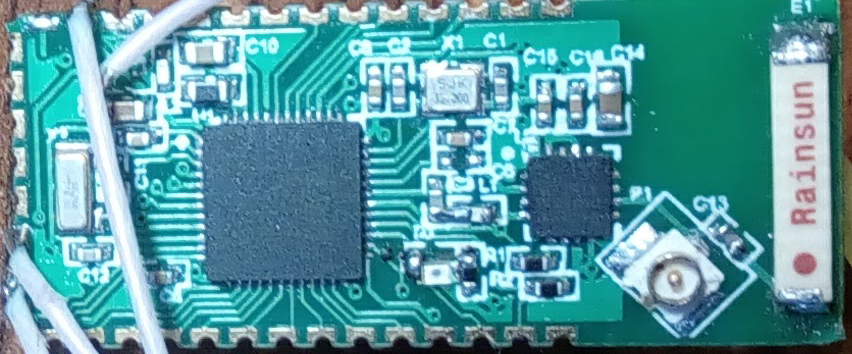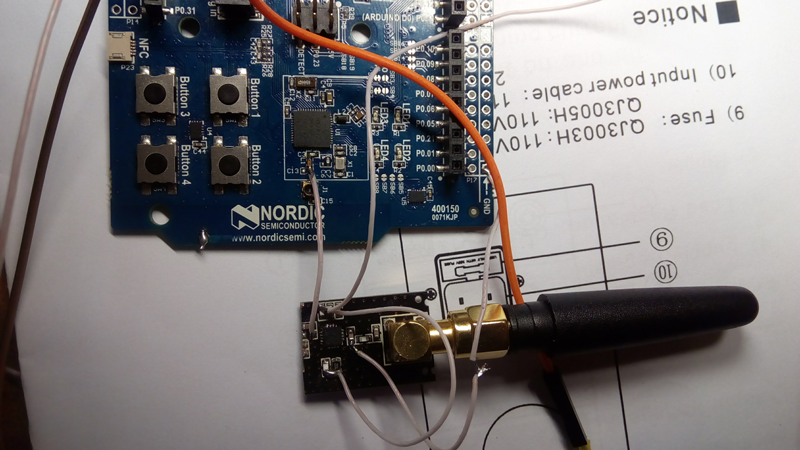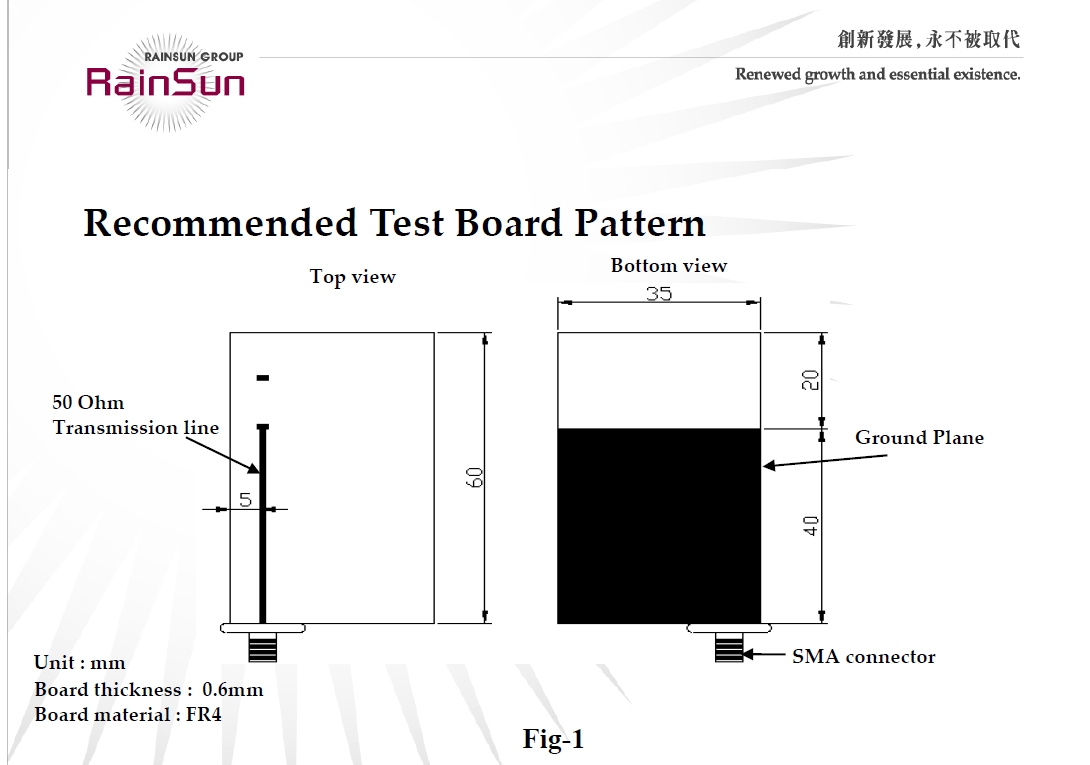Hello! I've soldered my first board with nrf52832 chip + PA on it. Everything works well beside the radio. The real distance (less 10m) even worse than on nrf52dk despite I use PA RFX2401
Here's my post with schematic pcb of this board, below the photo of that.
This amplifier is very popular for nrf chips especially nrf2401 and the range distance is about 500m-1km. Also the amplifier used for nrf51822.
The circuit for nrf52832 is standart from nordic documentation, the circuit in part of PA from datasheet
For enabling work of PA I set high level on pins 23,24 (due to absence special pins for that like in nrf51822)
Also I tried to connect external antenna via IPEX socket, the result was a little bit better.
The power amplifier should increase strength of signal up to +20dbm, in my case where nrf52dk has -55dbm - my board has -30dbm but when I far away (with smartphone nrf_connect app) from boards phone keeps get advertising packets from nrf52dk and start to loose some from my board.
I know this board is not very well done in part of radio (not enough vias for good ground plane).
I've even tried to use amplifier part of nrf2401+PA module with external antenna connect to my board. I've tried the same even with nrf52dk :)) (attahched photo below). Actually the result is the same. (Maybe it's not correct way to test PA but I had to test it)
I need the distance about 100-200m with one - two concrete wall or through 7-10mm metal





